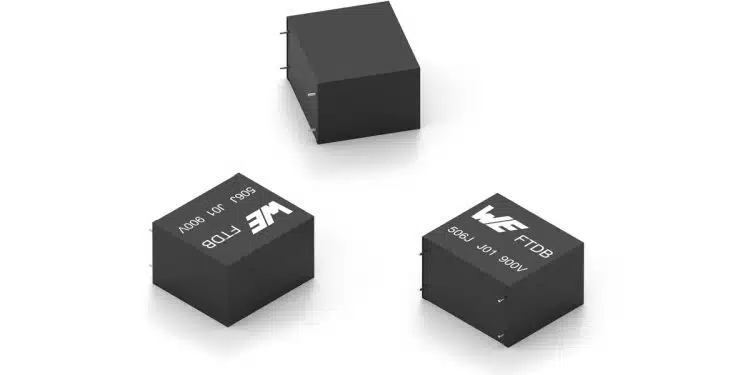Würth Elektronik introduces a new WCAP-FTDB series of DC-Link film capacitors.
The WCAP-FTDB series components can be used in the voltage range from 500 to 1200 V and are characterized by high ripple current capability. This makes them particularly attractive for use in AC/DC and DC/DC converters for charging systems and power electronics in e-mobility or in renewable energy solutions.
The 24-model product family offers capacitance values from 1 µF to 75 µF.
The capacitors for stabilizing DC-Link voltage are very robust. Thanks to their metallized polypropylene film design, they have self-healing properties whereby short circuits “burn out” their own cause, hence restoring an intact dielectric.
Significantly more durable than other capacitor types, the WCAP-FTDB series is suitable for applications with long maintenance cycles like wind turbines. Würth Elektronik provides a boxed THT package with pitch of 27.5 mm, 37.5 mm and 52.5 mm for this component family. The operating temperature of the film capacitors extends from -40°C to 105°C, the respective maximum voltage values attained are up to 85°C.
Like all products in the Electronic Components 2022/2023 catalog, the WCAP FTDB DC-Link capacitors are now available without a minimum order quantity. Würth Elektronik provides free samples and offers a wide range of characteristic measurement data of the capacitors in the REDEXPERT online tool. This facilitates the selection of suitable components.
See more about DC-Link capacitor specifications and applications at webinar: DC-Link Capacitor, Specification and Application
































